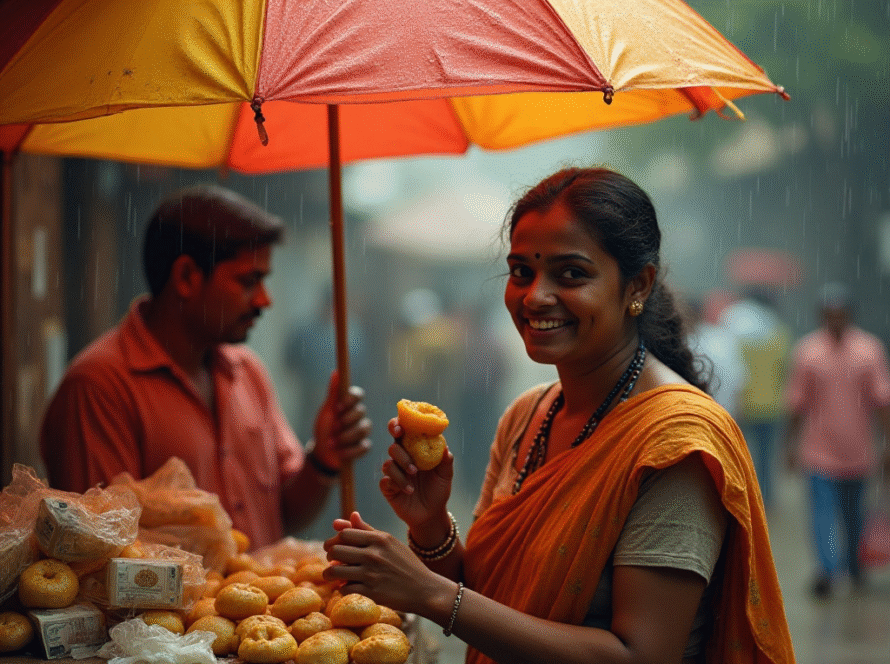Let me confess something: I’m a single Indian woman in my early 40s, and I’m madly, irrevocably, head-over-heels in love. With sarees. Yes, you heard me right. Six yards of handwoven beauty that makes me feel like a diva, a queen, and a graceful swan, all wrapped into one.
Sarees are my constant companions, my partners-in-crime. They’ve seen me through awkward family gatherings (aunties asking too many questions), work meetings where I’ve needed an extra boost of confidence, and random strolls through markets where I could bargain with a vendor and still look fabulous doing it.
Let’s start with the variety—oh, the glorious variety. Sarees are like the music of India, each region offering its own rhythm, its own beat. Think of a Banarasi silk saree as a classic Hindustani raga. It’s intricate, rich, and steeped in tradition. You drape a Banarasi, and suddenly, you’re not just walking; you’re gliding, like the taal of a slow vilambit composition. Every step, every pleat, every swish of the pallu is orchestrated to perfection.
Then there’s the breezy, earthy vibe of a Bengal Tant, which reminds me of a Rabindra Sangeet—light, delicate, and yet, deeply profound. The soft cotton feels like it’s whispering sweet nothings as it dances with the wind. And just like music, you need to know how to carry it; there’s a rhythm to the way a Tant saree moves that makes you want to hum along.
Of course, how could I forget the ever-royal Kanjeevaram? With its gold zari and bold colors, it’s nothing short of a grand Carnatic kirtanam. Bold, intricate, and always ready to make a statement—wearing one makes me feel like I could walk straight into a temple concert and own the stage. Not that I can sing in front of an audience, but a Kanjeevaram gives me the confidence that if I did, no one would care if I went off-pitch. The saree itself would cover for me!
There’s something universally appealing about sarees that transcends social barriers. I’ve worn my humble cotton handloom sarees on crowded Mumbai locals, elbowing my way through with a grace that only a saree can give. And on the other end of the spectrum, I’ve waltzed into high-profile events in my Mysore silk, and no one blinked twice. The saree speaks for itself. Whether you’re a college student tying her first saree for a farewell party or a CEO making deals over chai, that six-yard wonder adapts to you. It’s a shapeshifter in the world of fashion, capable of going from the simplicity of a farmer’s attire to the sophistication of a wedding ensemble.
But let’s be real: Draping a saree is no small feat. It’s like composing your own musical piece. You need to find the perfect rhythm to fold, tuck, and pleat. Get it wrong, and you’re a mess of fabric. But get it right, and you’re a symphony in motion. I still remember the first time I tried to wear a saree without my mother’s help. I must’ve looked like an off-beat drum solo—pleats everywhere, the pallu dragging behind me like a limp tail. But with practice, you learn the notes. You find the flow. And now, it’s like second nature to me. Give me a Mangalgiri cotton or a Pochampally Ikat, and I’ll be ready in ten minutes flat, looking like I just stepped out of a classic Bollywood movie.
Speaking of Bollywood, can we talk about the drama a saree brings? You know that moment in films when the heroine runs through a field, the wind catching her saree’s pallu in slow motion? That’s no special effect. That’s what happens in real life too—well, minus the fields and the slow motion. But honestly, I’ve had my share of “saree moments” when a gust of wind catches the fabric just right, and for a brief, shining moment, I’m the star of my own musical.
But the real magic of a saree lies in its timelessness. I have sarees that belonged to my grandmother, passed down like heirlooms. Every time I wear them, it feels like I’m connected to generations of strong, resilient women who wore these same six yards. The patterns, the fabrics, and the designs have evolved, yes, but the saree remains. Just like a classical composition, no matter how many modern fusions you try, its core essence remains untouchable.
Sarees are versatile. They don’t care about your body shape, your age, or your social status. They only care about how you carry them. You can be 18 or 80, and a saree will still make you look as elegant as a raga played on a perfectly tuned sitar.
In the end, sarees, much like music, are about freedom. They allow you to express yourself, whether you’re in a formal Kanjeevaram or a playful Kota Doria. They embrace you in their folds, just like a soulful melody, carrying you through life’s highs and lows. And honestly, there’s no better love story than that.
So, here I am, in my 40s, single but never alone, wrapped in six yards of history, elegance, and rhythm. And I wouldn’t trade this love for anything—not even for a man who claims he can tie a saree better than me. Well, maybe. But until then, it’s just me and my sarees, dancing to the beat of life.



